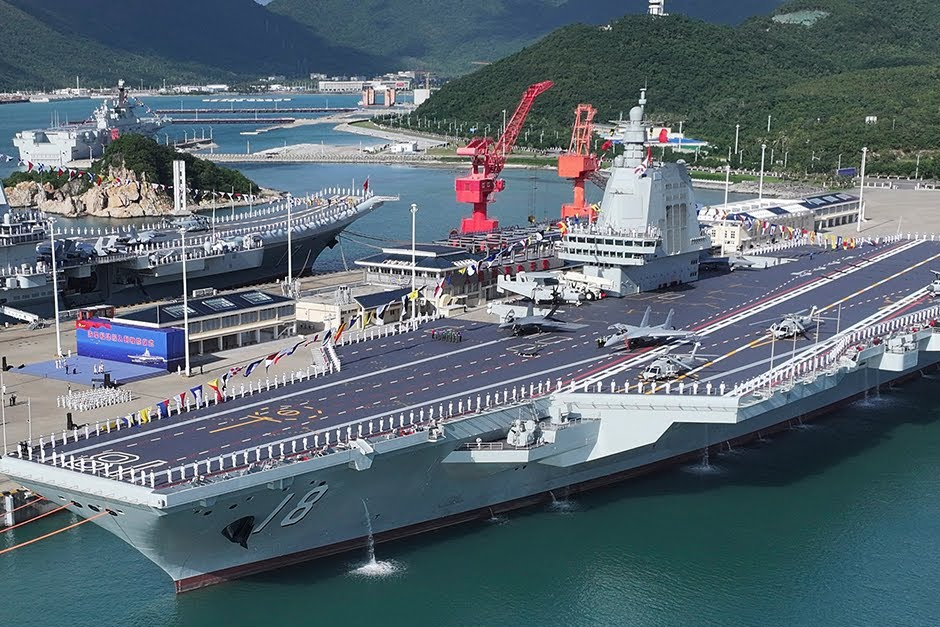The global maritime landscape is constantly evolving, and a recent development that has captured significant attention is the emergence of China’s newest aircraft carrier, the Fujian. Designated as the Type 003, this vessel represents a significant leap forward for the People’s Liberation Army Navy (PLAN) and offers a compelling glimpse into the future of naval power. Far from just another ship, the Fujian incorporates advanced features that position it as China’s most sophisticated and capable carrier to date.
A Technological Advancement: CATOBAR and EMALS
Perhaps the most talked-about feature of the Fujian is its adoption of an advanced aircraft launch and recovery system. Unlike its predecessors, the Type 001 Liaoning and Type 002 Shandong, which utilize a “ski-jump” Short Take-Off Barrier Arrested Recovery (STOBAR) system, the Fujian is equipped with a Catapult Assisted Take-Off But Arrested Recovery (CATOBAR) system. This is a monumental shift, bringing it in line with the operational capabilities of the most advanced carriers in the world.
The CATOBAR system on the Fujian specifically employs an Electromagnetic Aircraft Launch System (EMALS), similar in concept to that found on the U.S. Navy’s latest carriers. EMALS offers several critical advantages over traditional steam catapults or ski-jump ramps. It provides more precise and adjustable launch power, allowing for a wider variety of aircraft to be launched with greater payloads and fuel loads. This translates directly into enhanced combat effectiveness, enabling aircraft to carry more ordnance and operate at longer ranges. Furthermore, EMALS reduces wear and tear on aircraft and offers a higher sortie generation rate, meaning more aircraft can be launched and recovered in a shorter period.
Beyond its launch system, the Fujian is also significantly larger than China’s previous carriers. With an estimated full displacement of over 80,000 tons, it is designed to accommodate a larger air wing and operate more flexibly. This increased size and a flatter, more spacious flight deck contribute to greater operational efficiency, allowing for more simultaneous aircraft movements and maintenance operations.
Strategic Implications and Future Capabilities
The commissioning of the Fujian holds substantial strategic implications, fundamentally altering China’s naval power projection capabilities. The CATOBAR system, combined with the carrier’s increased size, allows for a more robust and diverse air wing. While currently expected to operate J-15 fighter jets, the Fujian’s advanced capabilities make it suitable for a new generation of aircraft, potentially including stealth fighters like the rumored J-35 and specialized airborne early warning and control (AEW&C) aircraft such as the KJ-600. The ability to launch heavy, fixed-wing AEW&C aircraft is particularly crucial for extending the carrier strike group’s situational awareness and command and control capabilities far beyond what was possible with helicopter-borne systems.
This carrier represents a clear statement of China’s intent to develop a true “blue-water” navy, capable of operating effectively in distant oceans. Its enhanced capabilities will allow the PLAN to project power further from its shores, support maritime security operations, and potentially influence events in regions far beyond its immediate vicinity. As one naval analyst observed, “The Fujian isn’t just a bigger ship; it represents a fundamental shift in how China can project air power at sea, significantly boosting their operational versatility and combat effectiveness.” The operationalization of such a complex platform also signals a significant maturation of China’s shipbuilding and naval aviation industries, demonstrating their ability to design and construct cutting-edge naval technology.
Conclusion
The Type 003 Fujian is more than just China’s third aircraft carrier; it is a symbol of its rapidly advancing naval ambitions and technological prowess. Its sophisticated CATOBAR system, particularly the EMALS, marks a significant departure from previous designs and positions the PLAN among a very select group of navies capable of operating such advanced platforms. As the Fujian undergoes sea trials and eventually becomes fully operational, its impact on regional and global maritime dynamics will undoubtedly be a subject of continued interest and analysis, reshaping perceptions of naval strength and influence for years to come.




